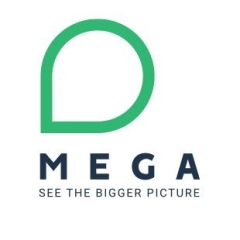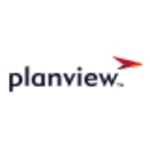What is our primary use case?
MEGA is a world-class application that would suit any kind of business, environment, retail business, city planning business, municipality, any bank or national, any air traffic control unit, and even for the space industry. MEGA is being used with global standards. The global standards are GRC governance, risk and complaints, data modeling, and business process management. Many methodologies and products are available within a HOPEX application that will serve different business requirements.
I currently deal with business process management, GRC models, and data modeling. My previous company is completely retail where they'll use it to define the business process and the process-oriented mechanisms. The functionality is very much suitable for anything. You can define the process, create the projects, and create the business functions, business processes, organization, and data modeling structures with that will interact with the legacy standards.
What is most valuable?
The latest version is HOPEX WiFi. HOPEX can be on the cloud and accessed from anywhere within the given access network area.
It is very interactive. We can do things from anywhere, and all the applications will work as specified.
We can generate documents and can publish the documents. We can create a data match and visualize graphs and everything. Everything can be generated from the web interface itself. It has good functionality.
We can develop our own customizations and meta models to define requirements, in-house business functions, and requirements.
MEGA is already defined by global standards. A company can adapt to global standards and work in such a way to design its own methodology to define its structure.
The interface is very good.
What needs improvement?
We don’t have any issues with the solution as it is right now. It offers all the functionalities one would expect.
The initial setup is a little complex.
For how long have I used the solution?
I’ve used the solution for eight years.
What do I think about the stability of the solution?
It is a very stable solution. The performance is very good. The loading time is very good and we have a set of guidelines letter to maintain the performance so that even through a web interface, you can launch the data launch website very quickly and access the data very fast. I did not see any lag.
That said, three or four years back, we had a lot of issues with the performance, and we got a different solution for that. We performed a reorganization of the database, and we used it to clear the history, something like that. But right now, even all these things have been addressed and it was very far better than before.
And I don't have any complaints from my end users. They are very happy. All end users are from Paris, Belgium, and London.
What do I think about the scalability of the solution?
The solution is scalable. We can add a number of users. That is not a problem. However, the problem comes here with the license. The licenses are very costly. Licenses will be given based on your discussion with the salesperson. They will define the scope of your business needs and they will suggest the number of licenses for each and every license product. Each and every product will be connected and whoever connects first. For example, if I take the license for 10 people, whoever connects the first people, whoever connects the first 10, for them, that license will be consumed. The 11th person will be parked aside. He has to wait to use the license.
We have more than 150 licenses here. It’s used quite widely and does help productivity.
How are customer service and support?
I used the solution at least once or twice a month. Right now, the application is very stable, and there are no escalations. Still, when I’ve reached out to them in the past, I’ve had a good experience. The technical leads act quickly.
They will give support only when the new application version is in support mode. If the application goes out of support date, they will not support, and they'll not provide any solution that is already agreed as a part of the agreement.
Still, their support is always excellent. If you raise a question, they'll provide a solution quickly and have a separate dedicated R&D team that can also investigate.
How would you rate customer service and support?
Which solution did I use previously and why did I switch?
I’m not sure if we have ever used a different solution. We’ve used this product for years.
How was the initial setup?
The initial setup was complex. We have to make sure we have to add so many security items in between the encryption, for example. There is a list of steps given by MEGA that we have to follow. However, that is something a technical person can handle. Still, it is not straightforward or easy to install.
We can do it pretty quickly and easily if it is in a normal, thin-line application. You just click next, next, next, and it'll install the application. However, to make sure you deploy the web interface, web version, and everything, some guidelines are given. We have to configure everything, and we need to ensure that everything is in compliance with the company’s security policies.
The deployment will take one day. The installation is just five to 20 minutes of time. However, considering that things are dependent on multiple teams, you can’t actually execute anything in that amount of time. Sometimes we lose permission. Sometimes we allow permissions to the license file. There are many dependencies. That said, if everything is ready, then we can execute everything in one or two hours.
I am an experienced person. I have deployed the application on many servers and know what to expect, including dependencies and permissions. We need the local admin rights of the user, for example. We must ensure we keep every task in line and gain access. And then we can do the things within one and two hours. If you are experienced and know what to expect, you can reduce the amount of time it will take.
What's my experience with pricing, setup cost, and licensing?
While licensing can get expensive, I can’t speak to the exact price. It really depends on how many licenses are needed by the organization. If I only need 150 licenses and another company needs 5,000, the pricing will be drastically different.
What other advice do I have?
We’re a customer and end-user.
I’d advise if a user is curious about the solution, they should first make sure that it fits their needs. They need to confirm how they will use it.
I’d recommend the solution as it is a world-class application.
I would rate the solution nine out of ten.
It supports real business needs and can be used in various sectors, like retail banking and space data. NASA is using this as per my knowledge, for example. The customized functionalities are all there. You only insert your data according to your requirements and it'll get through the standards and it'll produce the documents and the websites needed to publish to the customers.
Which deployment model are you using for this solution?
On-premises
Disclosure: My company does not have a business relationship with this vendor other than being a customer.






















